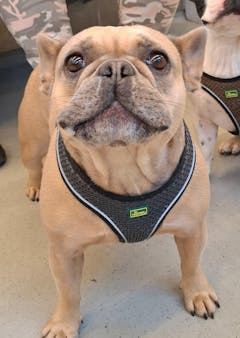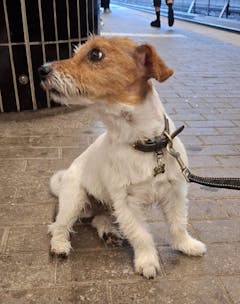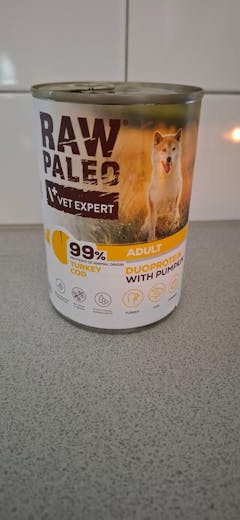Hundkragar
Hundkragar: Oumbärligt Skydd för Snabb och Säker Återhämtning av Din Hund
På ZooStar.se förstår vi att det kan vara en utmaning att se sin hund genomgå en **återhämtningsperiod** efter en operation, skada eller vid hudproblem. Instinkten att slicka på sår, bita på stygn eller riva i irriterad hud är stark hos hundar, men den kan allvarligt äventyra läkningsprocessen och leda till infektioner eller förvärrade skador. Det är här en **hundkrage**, ofta kallad "tratt" eller "lampskärm", blir ett absolut nödvändigt verktyg för att säkerställa en trygg och effektiv **återhämtning hund**.
En **skyddskrage hund** är inte bara en barriär; den är en livlina som ger din hund den bästa chansen att läka ostört och förhindrar att den river upp stygn, river på sår eller hindrar medicinering från att verka. På Zoostar.se erbjuder vi ett brett och noga utvalt sortiment av **hundkragar** designade för att maximera både skydd och komfort. Från den klassiska plastkragen till mjuka tygkragar och uppblåsbara varianter – vi har lösningar som passar olika behov, raser och temperament. I den här guiden kommer vi att djupdyka i varför **hundkragar** är så viktiga, vilka typer som finns, när och hur de ska användas, samt hur du väljer den perfekta **tratt hund** för din fyrbenta familjemedlem för att garantera en så smärtfri och snabb återhämtning som möjligt.
Varför är en Hundkrage Så Viktig? Förhindra Självtrauma och Komplikationer
Hundens naturliga instinkt att slicka och bita på irriterade områden är en av de största utmaningarna under en **återhämtningsperiod**. Detta beteende, även om det är naturligt, kan få allvarliga konsekvenser:
- Infektioner: Hundens mun och tassar är fulla av bakterier. Att slicka på ett sår eller en operationsplats kan överföra dessa bakterier och orsaka allvarliga infektioner som försenar läkningen och kan kräva ytterligare behandling, inklusive antibiotika.
- Stygn som går upp: Efter en operation är stygnen avgörande för att såret ska läka korrekt. Att bita eller tugga på stygn kan leda till att de går upp, vilket kräver omedelbar veterinärvård och kanske en ny operation.
- Förvärrade skador: Om hunden har en sårskada, ett hudutslag eller en allergisk reaktion, kan slickande och bitande förvärra irritationen, leda till hotspots eller göra skadan större och djupare.
- Avlägsnande av salvor och mediciner: Om du applicerar salvor eller mediciner på ett område som hunden kan nå, kommer den med största sannolikhet att slicka bort det, vilket gör behandlingen ineffektiv.
- Smärta och obehag: Även om hunden slickar för att lindra en klåda, kan överdrivet slickande leda till ytterligare inflammation och smärta.
En **hundkrage** fungerar som en fysisk barriär som hindrar din hund från att nå det drabbade området med munnen eller tungan. Det är en enkel, men oerhört effektiv, del av **vård & skydd hund** som bidrar till en problemfri läkning.
Olika Typer av Hundkragar: Hitta Rätt Tratt för Din Hund
På Zoostar.se har vi samlat ett varierat utbud av **hundkragar** för att möta olika behov och erbjuda maximal komfort under en svår tid. Att välja rätt typ av **tratt hund** är avgörande för acceptans och effektivitet.
1. Den Klassiska Plastkragen (Lampskärmen):
- Beskrivning: Den mest traditionella **skyddskrage hund**, ofta gjord av genomskinlig eller halvgenomskinlig plast. Den har formen av en kon och fästs runt hundens hals.
- Fördelar: Mycket effektiv för att förhindra åtkomst till nästan alla delar av kroppen (tassar, sår på kroppen, huvud). Relativt prisvärd.
- Nackdelar: Kan upplevas som klumpig, skrymmande och begränsande för hunden. Kan stöta emot möbler och dörrposter, vilket kan vara frustrerande. Kan ibland begränsa synfältet. Vissa hundar blir stressade av den.
- Användningsområde: Mycket effektiv vid sår på kroppen, svans, tassar och huvud.
2. Den Uppblåsbara Hundkragen:
- Beskrivning: En mjuk ring som blåses upp med luft och fästs runt hundens hals, liknar en "rese-nackkudde".
- Fördelar: Betydligt bekvämare än plastkragen. Hunden kan ofta äta, dricka och sova mer normalt. Ger fri sikt och orsakar mindre hinder i hemmet. Minskar stress hos många hundar.
- Nackdelar: Inte alltid lika effektiv för att förhindra slickande på tassar eller områden längre ner på benen, beroende på hundens kroppsform och flexibilitet. Kan punkteras.
- Användningsområde: Utmärkt för sår på bålen, nacken eller huvudet. Bra alternativ för hundar som inte accepterar den traditionella kragen.
3. Den Mjuka Kragen (Tygkrage):
- Beskrivning: Tillverkad av mjukt tyg, ofta med skumfyllning. Behåller formen av en kon men är mer flexibel och behaglig mot huden.
- Fördelar: Bekvämare och mindre skrymmande än plastkragen. Ger fortfarande ett bra skydd. Mindre ljudlig vid kollision med föremål.
- Nackdelar: Vissa hundar kan bita sönder eller manipulera tyget. Kan bli smutsig snabbare än en plastkrage. Inte lika stel och kan vara lättare att "vika" för hunden om den är väldigt motiverad.
- Användningsområde: Bra för de flesta sår och efter operation där hunden behöver förhindras från att slicka. Erbjuder en bra kompromiss mellan komfort och skydd.
När och Hur Lång Tid Ska Hunden Bära Kragen?
Tiden din hund behöver bära en **hundkrage** beror helt på orsaken till att den används och hur snabbt såret läker. Följ alltid veterinärens rekommendationer noggrant. Vanliga situationer och tidsramar inkluderar:
- Efter operation: Vanligtvis tills stygnen tas bort (7-14 dagar) och eventuellt några dagar extra för att säkerställa att såret är helt läkt och inte kliar.
- Vid sårskador, hotspots eller hudinfektioner: Tills såret eller hudproblemet är helt läkt och inte längre kliar eller irriterar hunden. Detta kan variera från några dagar till flera veckor.
- Vid ögon- eller öronproblem: För att förhindra att hunden kliar eller river i känsliga områden, tills behandlingen är avslutad och symtomen har försvunnit.
Det är av yttersta vikt att **hundkragen** bärs konstant under den rekommenderade perioden, även när du sover eller inte aktivt övervakar hunden. Bara några sekunders slickande kan förstöra veckor av läkning.
Välja Rätt Storlek och Vänja Hunden vid Kragen
Att välja rätt storlek och vänja din hund vid **hundkragen** är avgörande för en framgångsrik återhämtning.
Välja Rätt Storlek på Tratten:
Mät noggrant för att säkerställa att **hundkragen** sitter säkert och bekvämt. Följ dessa steg:
- Halsomkrets: Mät omkretsen av hundens hals där ett halsband normalt sitter. Kragen ska sitta tillräckligt åtsittande så att hunden inte kan dra den över huvudet, men inte så trångt att den stryper eller skaver. Du ska kunna få in två fingrar under kragen vid halsen.
- Längd: Mät från hundens halsband till nosspetsen. Kragen ska sträcka sig förbi nosen för att effektivt förhindra slickande och bitande. Om kragen är för kort, kan hunden fortfarande nå såret.
- Ras och kroppsform: Vissa raser (t.ex. de med lång nos eller korta ben) kan behöva specifika storlekar eller typer av kragar.
På Zoostar.se hittar du detaljerade storleksguider för varje **hundkrage** för att hjälpa dig att göra rätt val.
Vänja Hunden vid Kragen:
Många hundar reagerar negativt på en **hundkrage** i början. Med tålamod och positiv förstärkning kan de flesta hundar vänja sig:
- Börja långsamt: Introducera kragen i en lugn miljö. Låt hunden nosa på den och belöna.
- Korta stunder: Sätt på kragen under mycket korta stunder (några sekunder till minuter) och belöna rikligt med godis och beröm. Öka gradvis tiden.
- Associera med positivt: Ge mat och vatten medan kragen är på. Använd den under favoritlekar.
- Lindra frustration: Om hunden blir frustrerad, ta en paus. Ge den en stund utan kragen (under strikt övervakning) och prova igen senare.
- Säkerhet: Se till att kragen inte hindrar hunden från att äta, dricka eller röra sig på ett säkert sätt. Höj mat- och vattenskålar vid behov.
- Tålamod: Det kan ta några dagar för hunden att helt acceptera kragen. Ge inte upp, det är för hundens eget bästa.
Hundkragar som en Del av Hundens Totala Hälsa och Välbefinnande på Zoostar.se
På Zoostar.se är **hundkragar** en central del av vårt engagemang för din hunds **totala hälsa** och **vård & skydd hund**. Vi förstår att en **återhämtningsperiod** är en kritisk tid, och rätt utrustning kan göra all skillnad. Vårt sortiment av **hundkragar** är noga utvalt för att integreras sömlöst med andra viktiga kategorier i vårt breda utbud:
- Hundens Apotek: Här hittar du allt för medicinsk vård och hälsa. **Hundkragar** är en grundläggande del av detta "apotek" för att säkerställa att behandlingar och sår får läka ostört, vilket minskar risken för komplikationer som kräver ytterligare medicinering eller veterinärbesök.
- Vård & Skydd: Detta är den primära kategorin där **hundkragar** hör hemma. De representerar en förebyggande åtgärd för att skydda hunden från självtrauma och främja läkning, liknande skydd mot väder, parasiter eller olyckor.
- Rehabdräkter för hund: En utmärkt komplettering eller alternativ till **hundkragar**. I vissa fall kan en **rehabdräkt** ge tillräckligt sårskydd samtidigt som den är mindre restriktiv än en **tratt hund**. För djupa sår eller svårtillgängliga områden kan dock kragen vara nödvändig, eller så kan en kombination av båda användas för extra säkerhet.
- Första Hjälpen-artiklar: Efter en akut skada eller operation är det ofta nödvändigt att applicera bandage eller mediciner. En **hundkrage** är då avgörande för att förhindra att hunden omedelbart river bort förbanden eller slickar i sig medel, vilket är en grundläggande del av den initiala **första hjälpen** och den efterföljande läkningsprocessen.
- Lugnande till Hund: Att bära en **hundkrage** kan vara stressande för vissa hundar. För att underlätta acceptansen och minska ångest under **återhämtningsperioden**, kan lugnande medel för hund (efter samråd med veterinär) vara ett värdefullt stöd.
- Immunförsvar & Allmänt Stöd: Stress och smärta under en skadeperiod kan påverka hundens **immunförsvar**. Genom att säkerställa en smidig och komplikationsfri läkning med hjälp av en **hundkrage**, avlastar du hundens kropp och bidrar till dess övergripande **allmänhälsa**.
- Hundens Hörselskydd: Även om det inte är direkt relaterat, handlar båda dessa kategorier om att skydda hundens sinnen och välbefinnande från yttre påfrestningar. Precis som **hörselskydd** skyddar mot buller, skyddar **hundkragar** mot självförvållade skador.
Att välja rätt **hundkrage** från Zoostar.se är en omtänksam och nödvändig åtgärd för att stödja din hund genom en utmanande tid. Ge din hund de bästa förutsättningarna för att läka snabbt och säkert. Utforska vårt sortiment idag och investera i din bästa väns hälsa och välbefinnande!
Vanliga Frågor om Hundkragar (FAQ)
Vad är syftet med en hundkrage (tratt)?
Syftet med en **hundkrage** (ofta kallad **tratt hund** eller skyddskrage) är att förhindra att din hund slickar, biter, tuggar eller kliar på sår, operationssnitt, hotspots, hudirritationer eller bandagerade områden på kroppen. Detta är avgörande för att säkerställa att såret läker korrekt utan infektioner eller att stygn går upp, vilket annars kan leda till allvarliga komplikationer och fördröja **återhämtning hund**.
Hur länge ska min hund ha på sig hundkragen?
Den exakta tiden din hund behöver ha på sig **hundkragen** bestäms av din veterinär. Generellt är det tills såret eller operationssnittet är helt läkt och inte längre riskerar att öppnas upp eller bli infekterat. För operationer innebär det ofta tills stygnen tas bort (vanligtvis 7-14 dagar) och ibland några dagar efter det om det fortfarande kliar. Vid hudproblem eller sår som inte sytts kan tiden variera från några dagar till flera veckor.
Kan min hund äta och dricka med en hundkrage på?
Ja, din hund ska kunna äta och dricka med **hundkragen** på. Med en traditionell plastkrage kan det vara nödvändigt att höja mat- och vattenskålarna för att göra det enklare för hunden att nå dem. Uppblåsbara och mjuka kragar är oftast mindre hindrande och låter hunden äta och dricka mer normalt. Se alltid till att hunden har obehindrad tillgång till vatten, då uttorkning kan förvärra dess tillstånd.
Finns det bekvämare alternativ till den traditionella "lampskärmen"?
Absolut! Den traditionella plastkragen är mycket effektiv men kan vara obekväm för många hundar. På Zoostar.se erbjuder vi bekvämare alternativ som:
- **Uppblåsbara hundkragar:** Mjuka, kuddliknande ringar som ger fri sikt och mindre hinder i hemmet.
- **Mjuka hundkragar (tygkragar):** Flexibla och bekväma konformade kragar gjorda av tyg.
- Rehabdräkter för hund: Speciella kroppsdräkter som täcker sår på bålen och förhindrar att hunden slickar, vilket är ett utmärkt alternativ eller komplement till krage för många typer av sår.
Hur väljer jag rätt storlek på hundkragen till min hund?
För att välja rätt storlek på din **hundkrage**, behöver du mäta din hunds halsomkrets och längden från halsbandet till nosspetsen.
- Halsomkrets: Kragen ska sitta tillräckligt åtsittande för att inte glida av, men du ska ändå kunna få in två fingrar under den.
- Längd: Kragen bör sträcka sig minst ett par centimeter förbi hundens nos när den är på, för att helt förhindra att hunden når det aktuella området.
Min hund hatar sin hundkrage. Vad kan jag göra?
Det är vanligt att hundar initialt ogillar sin **hundkrage**. Här är några tips:
- **Gradvis introduktion:** Vänj hunden långsamt vid kragen med positiv förstärkning (godis, beröm).
- **Komfort:** Se till att kragen sitter korrekt och inte skaver. Överväg en mjukare eller uppblåsbar variant om den traditionella plastkragen är för jobbig.
- **Normalisera:** Försök att göra kragen till en del av vardagen. Låt hunden äta, dricka och leka med den på (under uppsikt).
- **Distraktion:** Ge tuggben eller interaktiva leksaker när kragen är på för att hålla hunden sysselsatt.
- Lugnande medel: Om ångesten är svår, diskutera med din veterinär om det finns lämpliga lugnande tillskott eller mediciner.
Kan jag ta av hundkragen ibland, till exempel när jag övervakar hunden?
Det rekommenderas starkt att du inte tar av **hundkragen** förrän din veterinär ger klartecken. Hundar kan slicka eller bita på ett sår blixtsnabbt, och även några sekunders ouppmärksamhet kan förstöra veckor av läkning, leda till infektioner eller att stygn går upp. Om du absolut måste ta av kragen för en kort stund (t.ex. för pälsvård), måste hunden vara under 100% konstant och direkt uppsikt, och det drabbade området bör täckas över med ett rent bandage om möjligt.
Husdjursprodukter Online
Utforska fler populära hundkategorier
Här hittar du många av våra mest efterfrågade kategorier – från hundfoder och godis till tillbehör, vård och aktivering.
Ledande Fodertillverkare
Populära hundfodermärken
Här hittar du våra mest populära hundfoder – från spannmålsfritt till veterinärfoder. Klicka på ett varumärke för att se hela sortimentet.






